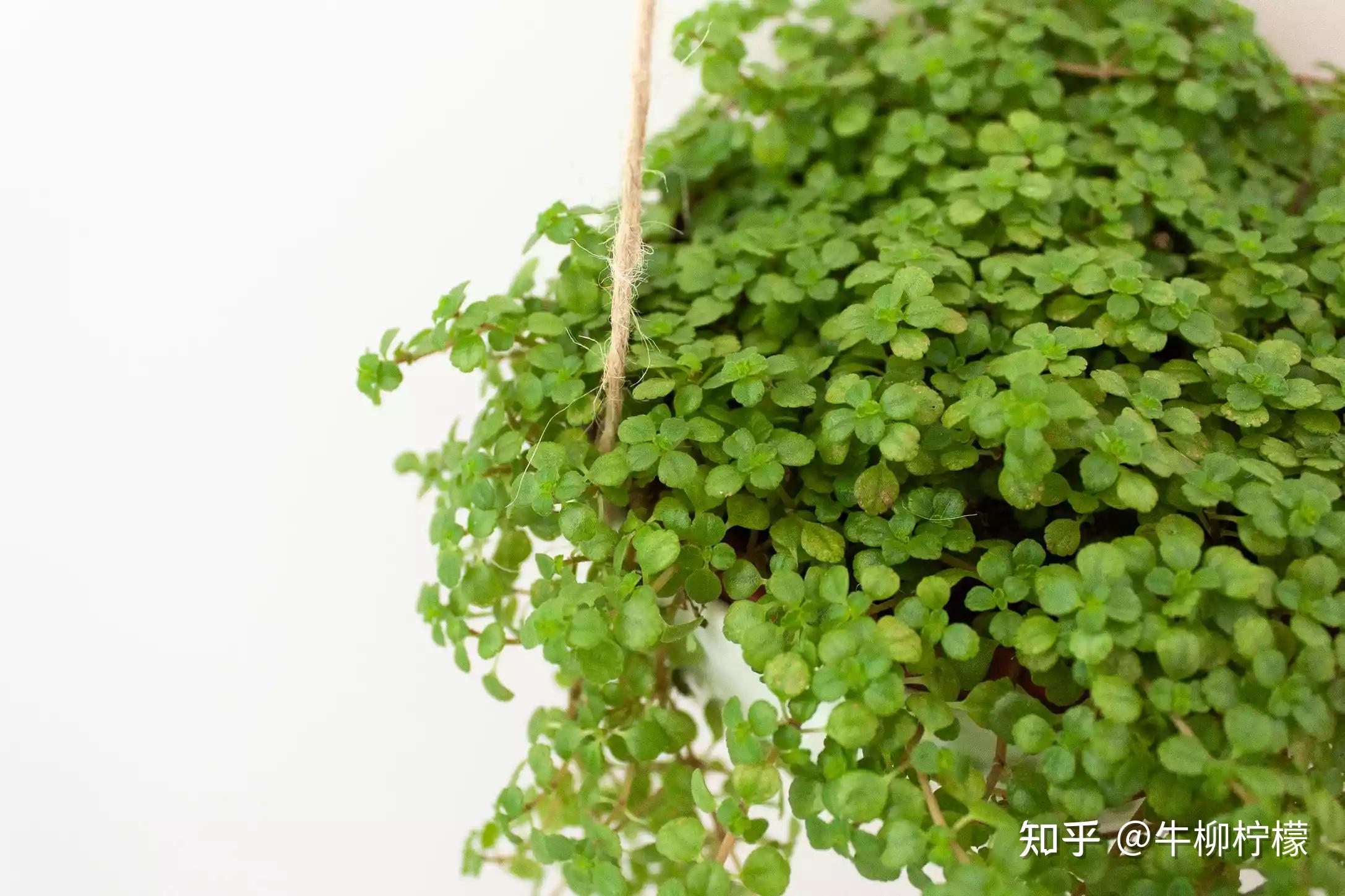The delicate cascading leaves of baby’s tears plant (Soleirolia soleirolii) make it a gorgeous addition to containers and hanging baskets. This easy-care plant thrives with minimal effort, as long as you meet a few basic care requirements. Follow this complete guide for tips on choosing the right pot watering, fertilizing, troubleshooting problems, and more!
Choosing the Right Pot for Your Baby’s Tears
Your baby’s tears will do best in a container that’s at least 6 inches wide and has drainage holes. This gives the vines room to spread out while allowing excess water to drain away.
Good potting soil is key. Use a lightweight mix that contains:
- Peat moss to retain moisture
- Perlite or vermiculite for drainage
- Compost or worm castings to provide nutrients
Terra cotta, plastic, ceramic, and self-watering pots all work well. Make sure to use a saucer under the pot to protect your floors
Watering Your Container Baby’s Tears
Baby’s tears likes moist but not soggy soil. Water thoroughly until it drains from the bottom when the top inch of soil becomes dry. This is usually every 5-7 days depending on light, temperature, humidity, and other factors.
Always dump out any water in the saucer afterwards so the plant doesn’t sit in standing water, which can lead to rot. Use your finger to test soil moisture before watering.
Ideal Light Conditions
While baby’s tears tolerates low light, it thrives in a spot with plenty of bright, indirect sun An east or west-facing window is often perfect Avoid direct southern exposure, which can scorch the leaves.
If you don’t have a bright spot, consider supplementing with a grow light. Rotate the plant periodically so all sides get even light exposure.
Temperature and Humidity Preferences
Baby’s tears grows best with daytime temps of 60-75°F and nighttime temps above 55°F. High humidity is also appreciated. Use a humidifier, set the pot on a pebble tray, or regularly mist the plant to boost moisture levels.
Fertilizing Your Baby’s Tears
Feed monthly during spring through fall with a balanced liquid houseplant fertilizer diluted by half. This provides the nutrients these heavy feeders need. Stop fertilizing over winter when growth slows.
Always water before fertilizing to avoid root burn. Flushing the soil monthly prevents buildup.
Pruning Your Baby’s Tears
No regular pruning is needed, but you can trim off any leggy vines or yellow leaves to keep your plant full and tidy. Use clean scissors or shears for the cleanest cuts.
Troubleshooting Common Baby’s Tears Problems
– Yellow leaves – Usually a sign of overwatering. Allow the soil to dry out more between waterings.
– Wilting – Can indicate under-watering. Check soil and water if dry 1 inch deep.
– Brown leaves – Often caused by too much sun. Move to a shadier spot.
– Drooping – May signal root rot from overwatering. Let soil dry out completely before watering again.
– Small leaves – Can indicate insufficient light or nutrition. Move to a brighter location and fertilize regularly.
FAQs about Caring for Baby’s Tears in Pots
Can I propagate my baby’s tears plant?
Yes! Just snip off a stem with several leaves and place it in moist potting mix. Keep evenly moist until roots form in a few weeks.
Can I grow baby’s tears outside?
It depends on your climate. Baby’s tears thrives outside year-round only in zones 9-11. Elsewhere, you can grow it outside in shady, humid spots during the warm season.
Should I prune off the flowers?
You can snip off the small, white blooms to prolong the foliage display. But leaving them on won’t harm the plant. It’s up to you!
Why are the leaves turning yellow?
Yellow leaves usually indicate overwatering. Check soil moisture before watering and wait until the top inch is dry before soaking again. Improving drainage can also help.
With the proper care, baby’s tears makes a gorgeous, easy-to-grow houseplant or outdoor annual. Give it bright, indirect light, high humidity, monthly fertilizer, and well-drained soil, and this cute trailing plant will thrive!

Pet Friendly
For the optimal growth, it’s best to you keep your container or bed consistently moist. However, it should never be soggy. The first rule of Baby’s Tear plant care is to give it a moist environment but the level of water must not go overboard.
Humidity
Normal household temperatures or even a little cooler are best for a Babys Tear plant. 60°-75° F are ideal temperatures.
